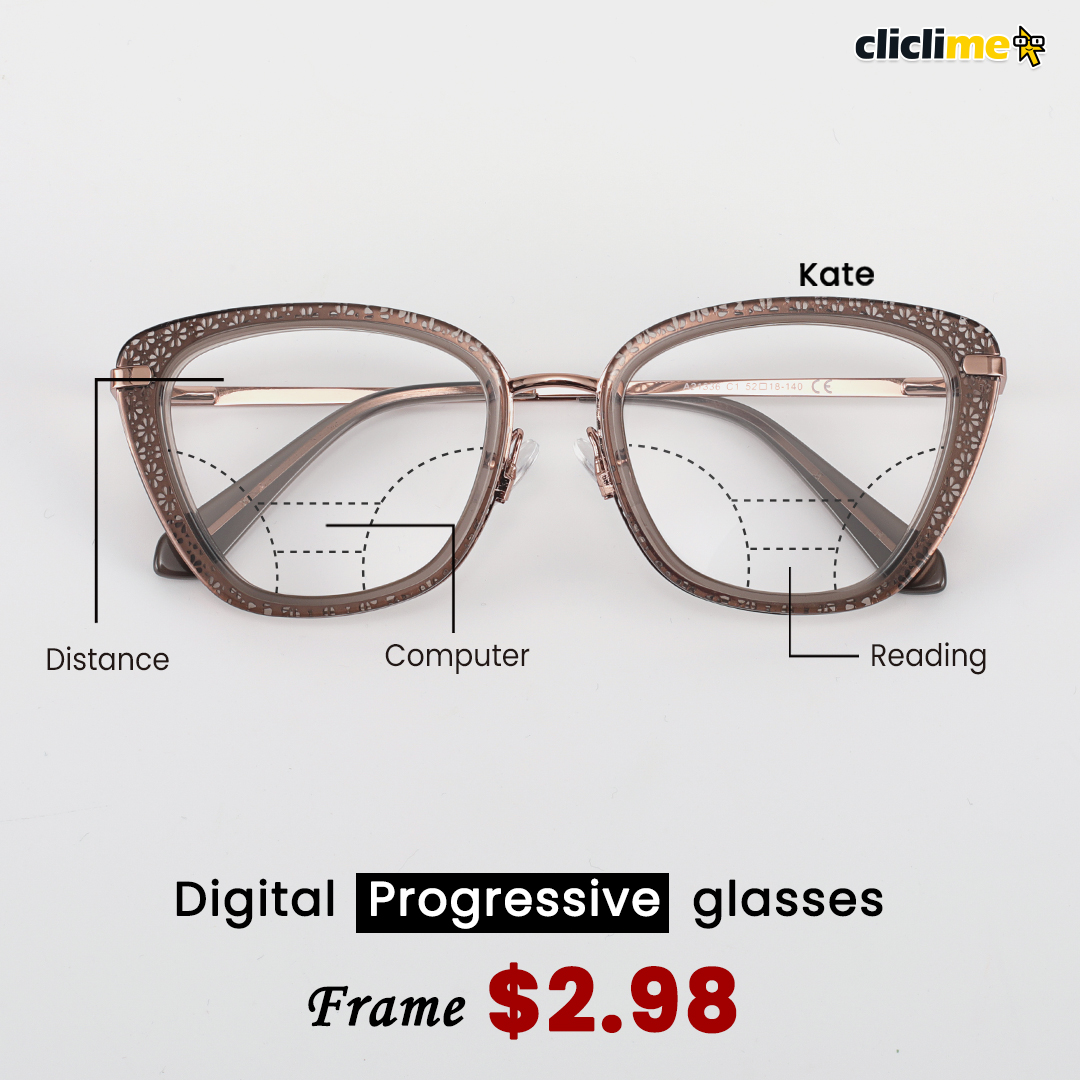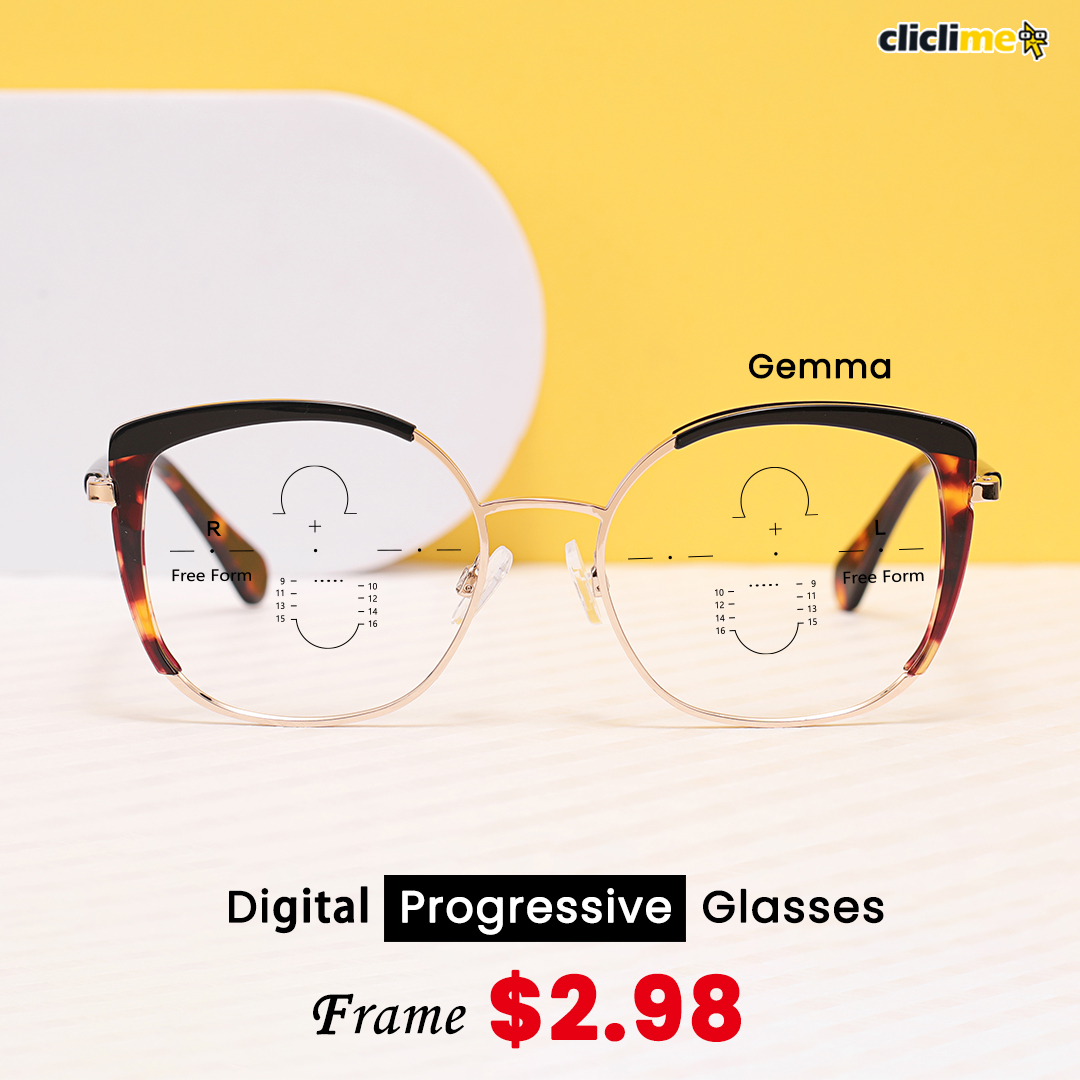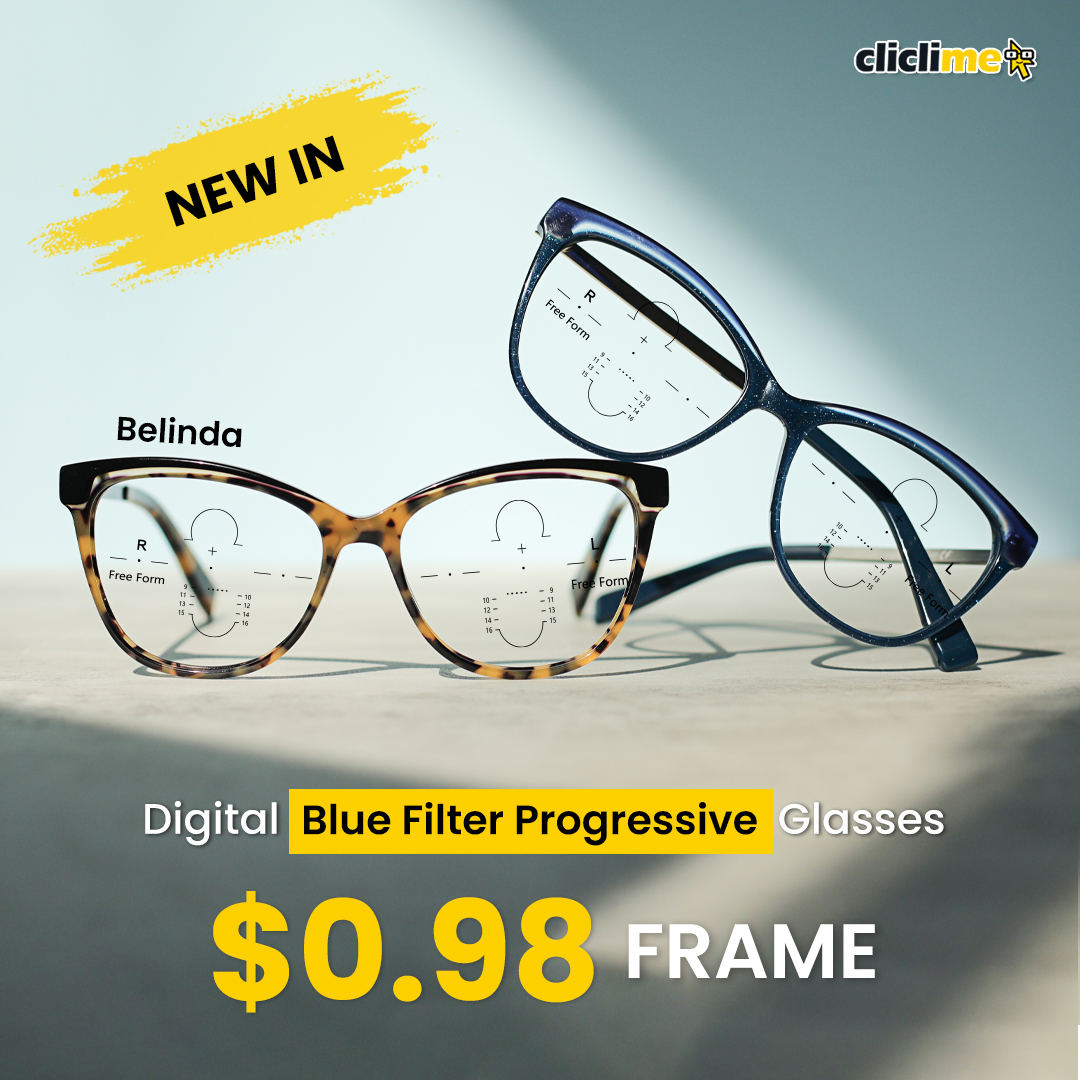Progressive Glasses Meaning / What Are Progressive Glasses?
As we age, our eyesight tends to deteriorate, and we may need glasses to help us see clearly. However, traditional eyeglasses have a fixed prescription, which means that they can only correct one distance at a time. This can be frustrating for people who need to switch between reading, computer work, and distance vision throughout the day. Fortunately, there is a solution: progressive eyeglasses.
Progressive glasses, also known as no-line bifocals or multifocal lenses, are a type of eyewear that allows you to see clearly at different distances. They are designed to correct presbyopia, a condition that affects people over the age of 40, where the eyes lose their ability to focus on objects up close.
Unlike traditional bifocal glasses, which have a visible line separating the two different prescriptions, progressive glasses have a gradual transition between the different prescriptions. This means that you can see clearly at all distances without having to switch between different pairs of glasses.
Progressive glasses are made up of three different sections: the top section is for distance vision, the middle section is for intermediate vision, and the bottom section is for near vision. The transition between these sections is seamless, allowing for a more natural and comfortable viewing experience. Progressive glasses are a great option for people who need to see clearly at different distances, such as when reading, using a computer, or driving. They are also a popular choice for people who want to avoid the visible line that is often associated with traditional bifocal glasses.
One of the main benefits of progressive glasses is that they provide a more natural and comfortable viewing experience, they allow you to see clearly at all distances without having to constantly switch between different pairs of glasses. This is particularly useful for people who spend a lot of time reading or working on a computer, as they can easily switch between different distances without having to take off their glasses.
Another benefit of progressive glasses is that they are more aesthetically pleasing than traditional bifocal glasses. The absence of a visible line makes them look more like regular glasses, which can be important for people who want to maintain a professional appearance.
Of course, like any type of eyewear, there are some potential drawbacks to consider. It is important to note that progressive glasses can take some time to get used to. The gradual transition between the different prescriptions can be disorienting at first, and some people may experience headaches or dizziness. It is important to give yourself time to adjust to your new glasses and to follow your optometrist's instructions for wearing them. If you are considering progressive glasses, it is important to have a thorough eye exam to determine the correct prescription for your needs. Your optometrist can also help you choose the right frame and lens options to ensure that your progressive glasses are comfortable and effective.
In conclusion, progressive glasses are a great option for people who need correction for both near and far vision. They offer a seamless transition between different prescriptions, allowing for a more natural and comfortable viewing experience. While they may take some time to get used to, the benefits of progressive glasses make them a worthwhile investment for anyone who wants to maintain clear vision at all distances
How To Tell If Your Glasses Are Progressive?
Progressive lenses are a type of multifocal lens that allows you to see clearly at different distances without the need for multiple pairs of glasses. However, it can be difficult to tell if your glasses are progressive or not. Here, we'll go over some tips on how to tell if your glasses are progressive.
1. Check the prescription
The first and easiest way to tell if your glasses are progressive is to check your prescription. If your prescription includes the letters "PAL" or "progressive" then you have progressive lenses. If your prescription only includes a single number for distance or reading, then you have single-vision lenses.
2. Look at the lenses
Another way to tell if your glasses are progressive is to look at the lenses themselves. Progressive lenses have a gradual change in power from the top of the lens to the bottom. This means that the top of the lens will have your distance prescription, the middle will have a slightly weaker prescription for intermediate distances, and the bottom will have your reading prescription. If you can see a visible line on your lenses, then you have bifocal lenses, which are different from progressive lenses.
3. Test your vision
If you're still unsure if your glasses are progressive, you can test your vision. Put on your glasses and look straight ahead. Slowly move your eyes down to the bottom of the lens. If you notice a change in clarity as you move down, then you have progressive lenses. If everything stays the same, then you have single-vision lenses.
4. Ask your optometrist
If you're still unsure if your glasses are progressive, the best thing to do is to ask your optometrist. They can easily tell you what type of lenses you have and answer any questions you may have about them.
In conclusion, knowing if your glasses are progressive is important for your vision and overall eye health. By checking your prescription, looking at the lenses, testing your vision, and askingyouroptometrist,you can easily determine if your glasses are progressive or not.
How Much Do Progressive Glasses Cost?
Progressive glasses are designed to correct vision problems such as presbyopia, which is a condition that affects people over the age of 40 and causes difficulty in seeing objects up close.
The cost of progressive glasses can vary depending on several factors such as the type of lenses, the frame material, and the brand. On average, the cost of progressive glasses can range from $200 to $600. However, some high-end brands can cost up to $1000 or more.
The type of lenses used in progressive glasses can affect the cost. For example, premium lenses such as high-index lenses, which are thinner and lighter than regular lenses, can cost more. Additionally, lenses with special coatings such as anti-glare or scratch-resistant coatings can also increase the cost.
The frame material can also affect the cost of progressive glasses. Frames made of high-quality materials such as titanium or acetate can cost more than frames made of plastic or metal.
Finally, the brand of progressive glasses can also affect the cost. High-end brands such as Ray-Ban or Oakley can cost more than generic or lesser-known brands.
In conclusion, the cost of progressive glasses can vary depending on several factors. It is important to consider your budget and needs when choosing the right pair of progressive glasses. It is also recommended to consult with an eye doctor or optician to ensure that you get the best possible vision correction.
Progressive Reading Glasses Clear On Top / Without Magnification On Top
As we age, our eyesight tends to deteriorate, and we find ourselves struggling to read small print. This is where reading glasses come in handy. However, traditional reading glasses can be a bit of a hassle, especially if you need to switch between reading and looking at something in the distance. This is where progressive reading glasses come in.
Progressive reading glasses are a type of multifocal glasses that have a clear lens on top and a magnified lens on the bottom. This means that you can use them to read the small print, but you can also look up and see things in the distance without having to take them off.
One of the main benefits of progressive reading glasses is that they are more natural to use than traditional bifocals. With traditional bifocals, there is a visible line between the clear and magnified lenses, which can be distracting and make it difficult to adjust to the different magnifications. With progressive reading glasses, there is no visible line, so the transition between the clear and magnified lenses is much smoother.
Another benefit of progressive reading glasses is that they are more aesthetically pleasing than traditional bifocals. Traditional bifocals have a visible line that can make you look older or give you a "nerdy" appearance. Progressive reading glasses, on the other hand, have a more modern and stylish look, making them a great choice for anyone who wants to look good while improving their vision.
Finally, progressive reading glasses are more versatile than traditional bifocals. With traditional bifocals, you have to tilt your head up or down to see things in the distance or up close. With progressive reading glasses, you can simply look through the appropriate part of the lens, making them much more convenient to use.
If you are looking for a more natural, aesthetically pleasing, and versatile alternative to traditional bifocals, progressive reading glasses are definitely worth considering. They are a great choice for anyone who wants to improve their vision without sacrificing style or convenience.
If you are considering progressive reading glasses without magnification on top, it is important to choose a pair that is comfortable and fits well. Look for glasses with adjustable nose pads and temples, as well as a lightweight frame that won't weigh you down. You should also choose a pair with a lens material that is scratch-resistant and easy to clean.
One of the biggest advantages of progressive reading glasses without magnification on top is that they are more versatile than traditional reading glasses. With traditional reading glasses, you can only see clearly at a specific distance, which can be frustrating if you need to switch between reading and looking up frequently. Progressive reading glasses, on the other hand, allow you to see clearly at all distances, making them ideal for a variety of activities, such as reading, working on a computer, or driving.
Another advantage of progressive reading glasses without magnification on top is that they are more aesthetically pleasing than traditional reading glasses. Traditional reading glasses can be bulky and unattractive, while progressive reading glasses are designed to look like regular glasses, with no visible line between the different lens powers.
In conclusion, progressive reading glasses without magnification on top are a great option for those who need to switch between reading and looking up frequently. They are versatile, aesthetically pleasing, and provide a seamless transition between different distances. If you are in the market for new reading glasses, consider giving progressive reading glasses a try.











